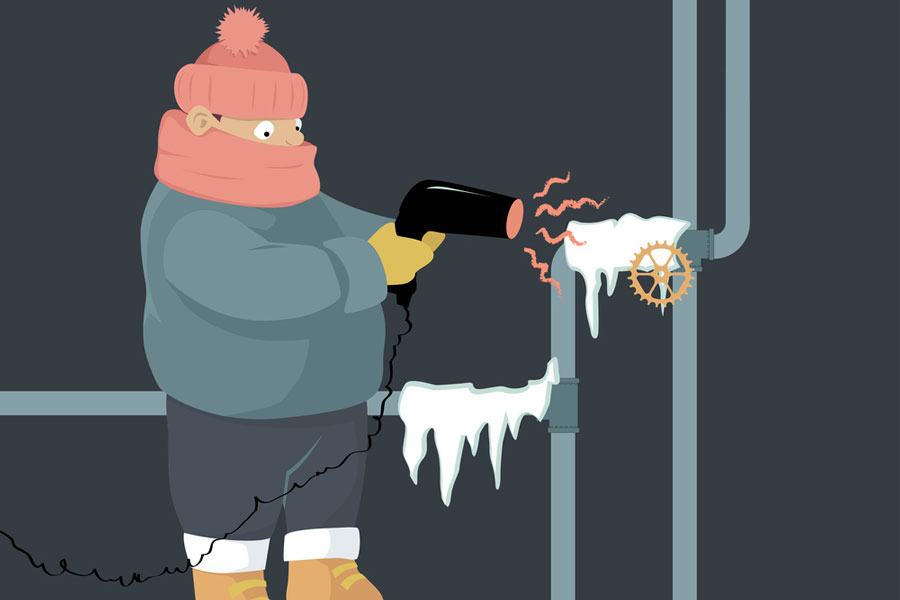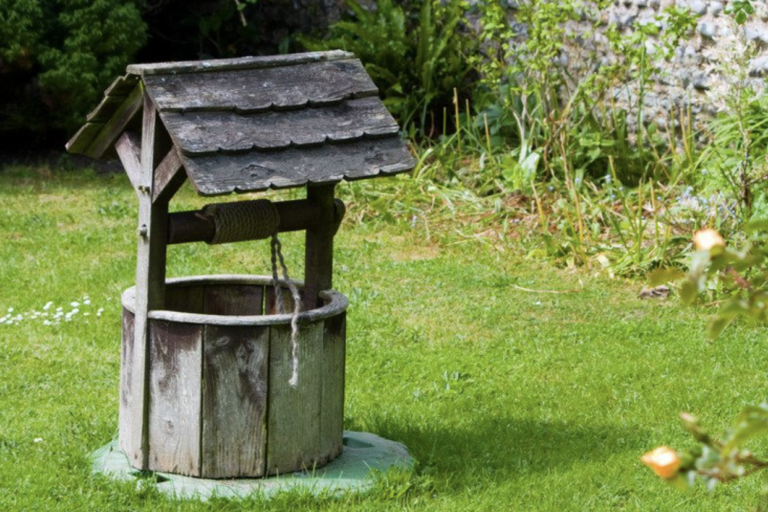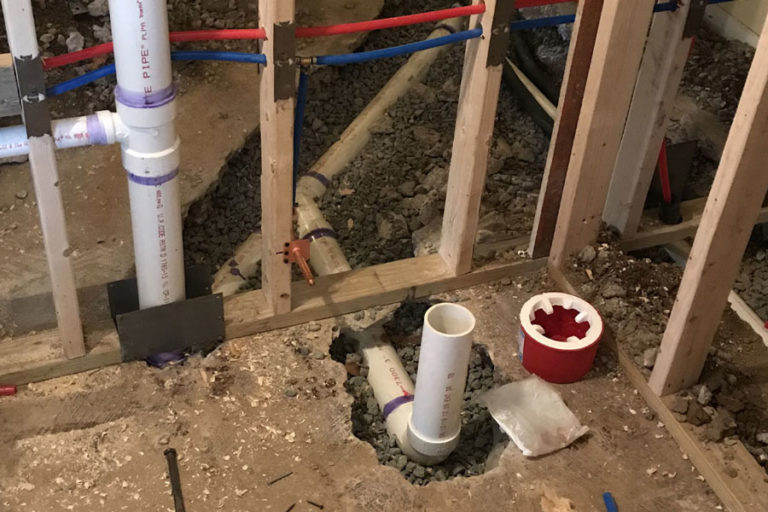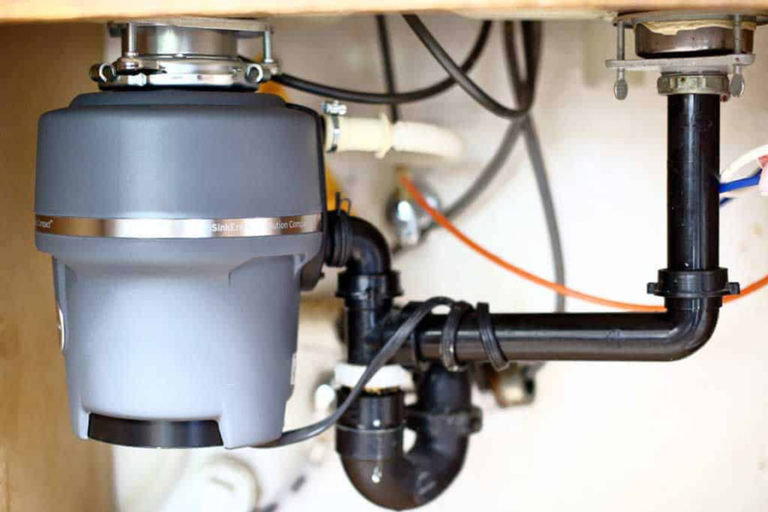How to Thaw Frozen Pipes with a Hair Dryer (or a Bath Towel!)
Many homeowners in cold winter climates have experienced frozen pipes. Unfortunately, this is a dangerous situation because it increases the risk of costly water damage when the pipes burst or split open.
More so, the key to successfully thawing a frozen pipe is to melt the frozen water without turning it into steam. In order to do this, you’ll need to work from the open faucet toward the frozen section, and never let the pipe get too hot to touch.
Here’s how to get this is done in 7 steps — with a hair dryer or a bath towel and a little duct tape.
4 Signs That You Need to Thaw a Frozen Pipe
- There are strange odors coming out of your faucet or drain
- There is no water, or very little water, coming out of your pipes
- There is visible frost on the pipes
- The water coming out of your pipes is not at the correct temperature
If you have any of these, investigate more closely for a frozen pipe as your culprit. Then move on to the following solution.
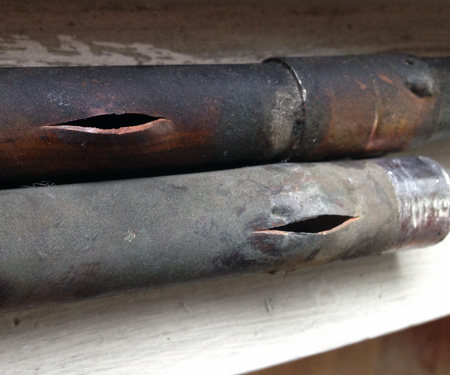
How to Thaw Frozen Pipes in 7 Steps
For this solution, all you’re going to need is warm air from a hair dryer and a little patience.
- Turn off water. The first step in almost any water-related plumbing repair is to turn off water to the area you’re working on. Near your water meter is a main shut-off valve for the entire house. Turn it horizontal to the pipe and it will shut off water to your house.
- Find the frozen pipe. Many times, the frozen pipe is behind a wall so finding a precise location can be difficult. But you’ll know generally where it is based on which fixture (like your washing machine) or faucet (like an outdoor spigot) isn’t getting any water.
- Open the faucet. Start by opening the faucet nearest to the frozen section. This is done so that any steam you accidentally generate does not build up pressure in the pipe. By giving it an exit, the steam will escape and not burst the pipe.
- Heat the pipe with a hair dryer. At the open faucet, begin heating the pipe with your hair dryer. To prevent overheating, hold the hair dryer 6 inches from the pipe and move it back and forth as if you were spray painting the pipe. It’s okay to use high heat as long as the pipe remains cool enough to touch. Advance your drying motion along the pipe at about 1 foot per minute.
- Repeat the process. Be patient and repeat the process slowly as needed. Creating steam by heating the pipe too fast will be your worst nightmare. Continue the slow-heating process until the frozen water melts and runs freely out of the faucet. You can now turn back on the main water shut-off valve.
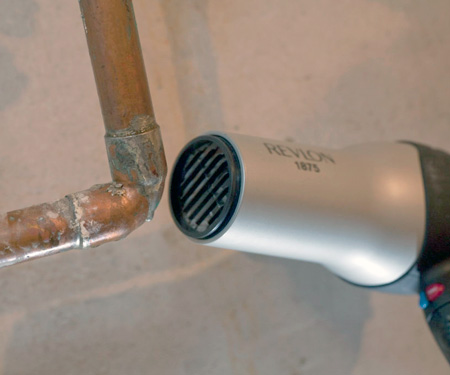
How to Thaw Frozen Pipes with a Bath Towel
So, what if you don’t have a hair dryer handy? Here’s another easy solution that uses a bath towel, a pot or tea kettle filled with hot water, and duct tape or string.
- Turn off the water. As in the first step above, turn off your main water supply’s shut-off valve. It’s probably located in the basement near your water meter.
- Attach bath towel to frozen pipe. Wrap your bath towel around the frozen pipe and secure the ends with duct tape or string.
- Pour hot water. Take your hot water (hot, not boiling) and pour it over the towel. As soon as the towel cools to room temperature, slide it several feet down the pipe and repeat the process with more hot water.
- Repeat as needed. Do this until the ice has melted and water is freely flowing out of your faucet or into your fixture.
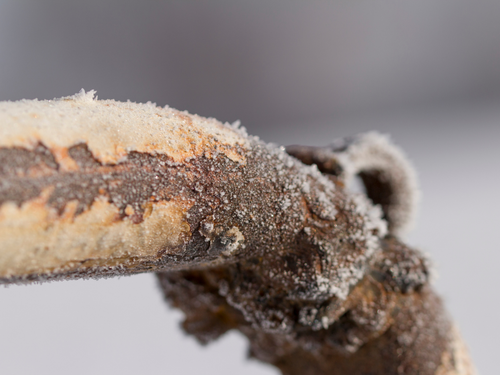
Final Thoughts
In conclusion, the realization of a frozen pipe can cause a bit of panic in a homeowner. Nevertheless, everyone’s heard stories of how frozen pipes burst and caused thousands of dollars in damage from flooding.
Don’t panic. All in all, knowing how to thaw frozen pipes is now part of your plumber’s toolkit. Certainly, these two solutions are available to anyone with a hair dryer or bath towel and are easily done.
Call 1-Tom-Plumber
Don’t hesitate to contact us here or call us at 1-Tom-Plumber (1-866-758-6237) if you need help defrosting or thawing a frozen pipe.
1-Tom-Plumber’s certified team of plumbers and drain technicians respond immediately to any emergency plumbing, drain cleaning, or water damage problem. We also handle the excavation of underground water lines and sewer main lines. Our immediate-response team is available every day and night of the year, even on holidays.

